2019 ROTC Hall of Fame Inductees
Master Sgt. (Ret.) Francisco Morales, M.S.Ed., Class of 2012
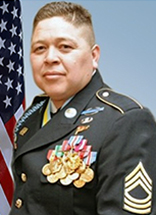
In May 1990, Francisco Morales enlisted to serve as an Infantryman in the U.S. Army at San Diego, California. He completed Basic Combat Training and 11B Infantry Advanced Individual Training at Fort Benning, Georgia, and reported to his first duty station at Fort Ord, California.
Over the course of the next 20 he would serve with distinction as he progressed up through the enlisted ranks, ultimately attaining the rank of Master Sergeant in February 2008. His service included five overseas deployments. He served in Rwanda in 1995 and was among the first American Soldiers to enter Bosnia and Herzegovina in December 1995.
He returned to the Balkans in 1997, and was deployed twice to Afghanistan during Operation Enduring Freedom, first from October 2003 until May 2004 and then from February 2006 until May 2007.
During his second deployment to Afghanistan, on August 26, 2006, Morales was a platoon sergeant and acting platoon leader for 3rd Platoon, Alpha Company, 2nd Battalion, 87th Infantry Regiment, 3rd Brigade Combat Team, 10th Mountain Division. That morning, as convoy commander, he was responsible for a mounted patrol that was in the vicinity of Hill 2911 near Lawara in Paktika Provice when the Americans received heavy and accurate machine gun and RPG fire.
Morales risked his life by exposing himself multiple times to RPG and small arms fire in the kill zone of a linear ambush to save the lives of wounded U.S. soldiers and gain fire superiority and defeat the enemy force.
His dynamic leadership and disregard for his personal safety allowed him to direct an overwhelming response to a platoon-sized enemy ambush, to provide aid to U.S. soldiers pinned down and wounded in the kill zone, and to conduct Pathfinder operations that established the MEDEVAC site. He would receive the Silver Star Medal for his conspicuous gallantry and intrepidity in action that day.
Morales came to St. Bonaventure in 2007 as senior Military Science instructor in the university’s Army ROTC program, where he spent the final three years of his career dedicating himself to building the next generation of Army leaders. More than 40 officers who were commissioned through the Seneca Battalion Army ROTC program benefited from his experience, professionalism and commitment to the Army values.
After his retirement in May 2010, he chose to remain a member of the Bonaventure family and to continue raising his family in the community. He graduated from the university’s Master of Education in Counseling program in 2013 and worked as a mental health counselor for Catholic Charities from 2013 to 2014, then as a guidance counselor at Bolivar-Richburg Central School from 2014 until April 2017.
The founder of the Student Veterans Association, he returned to the university in April 2017 and serves now as the director of Military Aligned Students. He is the fifth ROTC Hall of Fame inductee to have earned a master's degree at St. Bonaventure.
His military awards and decorations include the Silver Star Medal, Bronze Star Medal, Meritorious Service Medal (2 OLC), Army Commendation Medal (4 OLC), Army Achievement Medal (4 OLC), Good Conduct Medal (6th Award), National Defense Service Medal (2 Service Stars), Armed Forces Expeditionary Medal, Afghanistan Campaign Medal (2 Service Stars), Global War on Terrorism Expeditionary Medal, Global War on Terrorism Service Medal, Armed Forces Service Medal, Noncommissioned Officer Professional Development Award (3rd Award), Army Service Ribbon, Overseas Service Ribbon (6th Award), NATO Medal (2nd Award), Combat Infantryman Badge, Expert Infantryman Badge, Pathfinder Badge, Parachutist Badge, Drill Sergeant Identification Badge, Joint Meritorious Unit Award, Presidential Unit Citation, Valorous Unit Citation, Meritorious Unit Award and Army Superior Unit Award.
Col. (Ret.) Kevin O'Connor, D.O., Class of 1988
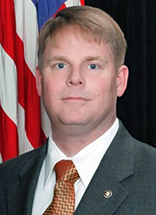
Kevin O'Connor graduated with a Bachelor of Science in biology and minor in theology, was commissioned as a second lieutenant through Army ROTC, and graduated from the N.Y. College of Osteopathic Medicine with a Doctor of Osteopathy (D.O.) in 1992. He completed residency training at Mountainside Hospital in Montclair, New Jersey, and graduated from the AMEDD Officer Basic Course in 1995.
From 1995 until 2003, he served in progressively challenging positions at Fort Bragg, North Carolina, including Staff Physician, Faculty Attending Physician, Officer-In-Charge of several medical facilities and 82nd Aviation Brigade, 82nd Airborne Division Brigade Flight Surgeon. In 1999, he was appointed Deputy Surgeon/Officer-In-Charge of Clark-Rodriquez Medical Facility, 1st Special Forces Operational Detachment – DELTA, and in September 2000 he became Command Surgeon, 1st Special Forces Operational Detachment – DELTA.
He deployed to both Operation Iraqi Freedom and Operation Enduring Freedom (Afghanistan) to conduct tactical combat casualty care as the senior medical officer in this elite Special Operations organization. O’Connor completed the U.S. Army Command and General Staff College before becoming the Chief of the Department of Family Practice at Evans Army Community Hospital in Fort Carson, Colorado, in 2004.
He rejoined the Special Operations community as the Joint Strike Force Surgeon/Battalion Surgeon, 3rd Battalion, 75th Ranger Regiment in Afghanistan and returned to Fort Carson in 2005 as the Officer-in-Charge, Warrior Family Medicine Clinic Development Project.
He joined the staff of The White House in Washington, D.C., as a physician in November 2006, and in February 2009, began a more than eight-year appointment as the Physician to the 47th Vice President of the United States. In this capacity, he provided primary care for Vice President Biden and the Second Family.
He retired as a colonel in August 2017 and joined the faculty of The George Washington University School of Medicine as Director of Executive Medicine. Additionally, he serves as the Medical Director of International & Diplomatic Affairs at The George Washington University Hospital and Associate Professor of Medicine and Senior Medical Advisor for Health Sciences Programs at the School of Medicine & Health Sciences.
O’Connor has received many military and professional honors, has published and presented extensively, and is a Fellow of the American Academy of Family Physicians. He holds numerous professional certifications and his professional activities include Charter Membership in The Committee on Tactical Combat Casualty Care (COTCCC).
He is Executive Vice President and Chief Medical Officer of Action Medical Technologies and was the Inaugural “Leader-in-Residence” Distinguished St. Bonaventure University Alumnus in 2014. He is the second ROTC Hall of Fame inductee from the Class of 1978.
His military awards include the Defense Superior Service Medal, Bronze Star Medal (1 OLC), Meritorious Service Medal (1 OLC), Joint Service Commendation Medal (1 OLC), Army Commendation Medal (2 OLC), Joint Service Achievement Medal, Army Achievement Medal (1 OLC), Army Reserve Component Achievement Medal, National Defense Service Medal (2 Service Stars), Afghanistan Campaign Medal (2 Service Stars), Iraq Campaign Medal (1 service star), Global War on Terror Medal, Armed Forces Expeditionary Medal, Global War on Terror Service Medal, Armed Forces Service Medal, Humanitarian Service Medal, Armed Forces Reserve Medal, Army Service Ribbon, Army Reserve Components Overseas Training Ribbon, Combat Medic Badge, Expert Field Medic Badge, Master Flight Surgeon Badge, Parachutist Badge, Venezuelan Parachutist Badge, Presidential Service Badge, Vice Presidential Service Badge, and numerous unit awards.
Capt. USN (Ret.) Henry J. Sanford, Class of 1973
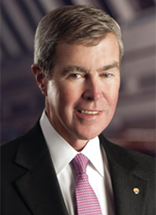
Captain Henry J. “Hank” Sanford was born in Washington, D.C., on July 30, 1951, and graduated from Bishop Ireton High School. He enrolled at St. Bonaventure University, enrolled in the Army ROTC program for one year, and was one of the student managers of the 1970 Final Four men’s basketball team before he graduated in 1973 with a Bachelor of Business Administration in finance.
He was commissioned an Ensign through the Reserve Officer Candidate program in August 1973 and began his nearly 35-year career as a Surface Warfare Officer. After completing training, his initial sea tour was in the amphibious ship USS AUSTIN (LPD 4), where he served as First Division Officer and Boat Division Officer. In 1975, Sanford was assigned as Engineer Officer in USS ANTELOPE (PG 86), a guided missile-equipped patrol gunboat home-ported in Naples, Italy.
Following a tour ashore as Director, Advanced Gas Turbine School in Great Lakes, Illinois, and as a student at the Naval Postgraduate School, he returned to sea as Engineer Officer in USS OLIVER HAZARD PERRY (FFG 7) from 1980 to 1982. In 1982, Captain Sanford was assigned as Material Officer on the staff of Commander, Destroyer Squadron Eight. In 1984, he reported to the U.S. Naval Academy where he served as Flag Secretary to the superintendent and as an economics instructor.
Captain Sanford reported to USS MERRILL (DD 976) as Executive Officer in January 1986. During this tour, he participated in Persian Gulf operations including Operations Earnest Will and against the Iranian navy during Praying Mantis, for which he was awarded the Navy Commendation Medal with Valor Device. Returning ashore in July 1988, Captain Sanford was assigned to the staff of Director, General Planning and Programming Division, Office of the CNO (OP 80). He graduated from the National War College in June 1991.
Captain Sanford had command of USS SIMPSON (FFG 56) from January 1992 until September 1993. During this period SIMPSON made two deployments to the Mediterranean Sea and Persian Gulf. From November 1993 until June 1994, Sanford was the Director of Resource Management at the Naval Postgraduate School and then served as the Executive Assistant (Chief of Staff) to the Superintendent of the U.S. Naval Academy from July 1994 to June 1998.
He commanded Naval Station Pearl Harbor from September 1998 until June 2000 and was Deputy Director of Information Technology Services at the U.S. Naval Academy from June 2000 until his retirement as a Navy captain in March 2002.
Following retirement from active service, Sanford became the Chief Financial Officer & Treasurer of the United States Naval Academy Alumni Association, Inc. and the United States Naval Academy Foundation, Inc. — two nonprofit supporting organizations of the United States Naval Academy. He remained with the Alumni Association until retiring in 2017. During that time, Sanford was also a volunteer official for the Navy Federal Credit Union and served on its board of directors for 14 years.
His education included a Master of Business Administration from the Naval Postgraduate School in Monterey, California, and graduation from the National War College. Selected as a member of the Seneca Battalion Army ROTC Hall of Fame in 2018, Captain Sanford passed to new life on 16 October 2018, prior to the induction ceremony. He is the first ROTC Hall of Fame inductee from the Class of 1973.
His awards include the Legion of Merit (w/Gold Star), Meritorious Service Medal (w/Gold Star), Navy Commendation Medal (Combat V/two Gold Stars), Navy Achievement Medal (w/Gold Star), and various unit and expeditionary awards. He is survived by his wife Captain Katherine Lovejoy Sanford, USNR (Ret) of Seattle, Washington and daughters, Patricia, Katherine, and Mary.
Cmdr. (Ret.) U.S. Navy Stephen F. Wilder Sr., Class of 1968
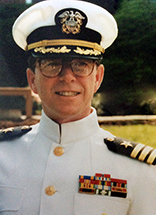
Born in Brooklyn, New York, on Dec. 2, 1946, Stephen F. Wilder Sr. graduated from W.C. Mepham High School before enrolling at St. Bonaventure University, where he earned a bachelor’s degree in Journalism. Commissioned a Field Artillery second lieutenant through the Army ROTC program, he completed the Field Artillery Basic Officer Course in 1968 and German Language training in Arlington, Virginia, the next year.
His first field assignment was as a lieutenant in a field artillery battalion in Germany. In 1971, he was promoted to captain and was assigned to the 8th Military History Detachment, in the 1st Aviation Brigade. During the next year, Wilder commanded the detachment and served as the brigade historian, which required frequent interviews and participation in combat operations. He earned the Air Medal and two awards of the Bronze Star Medal.
Following his one-year tour of duty in Vietnam, he returned to the United States in 1972 and was honorably discharged. Wilder began what became a rewarding civilian career in finance after his military service, first with Bethlehem Steel Corporation and later as an executive in New York City with Bankers Trust and JP Morgan Chase. After a decade, however, he applied for a commission in the United States Navy and accepted an appointment as a Naval Reserve officer.
This did not slow his trajectory in the world of finance and with Chase, he took charge of the bank’s Treasury Services in Europe, which required him to spend time between New York and London. He continued to serve in the Naval Reserve and received several promotions, culminating in March 1990, when he was promoted to the rank of Commander. Wilder continued to serve until retiring from the Naval Reserve in 1997.
A longtime resident of Maplewood and South Orange, New Jersey, he was active in his community and served as a Boy Scout leader for 15 years. He also served as a Blue and Gold Officer for the Naval Academy, recruiting candidates for admission. In 2007, he retired from his civilian career as a senior vice president for JP Morgan Chase’s Treasury Department, but after relocating to Mantoloking, found that he missed his military and naval service. He joined the U.S. Coast Guard Auxiliary and, when asked by friends what a Navy Commander was doing as a Coast Guard seaman, he simply said he liked to drive the boat.
He joined the U. S. Park Service in 2006 and volunteered at Morristown National Historical Park, where he dedicated more than 3,000 hours in service by leading tours for visitors and schoolchildren, maintaining nature trails and assisting with historical research. He achieved Master Volunteer Ranger status, repeatedly earned the Inter Agency Free Volunteer Pass, was a certified NPS Chainsaw Operator, and received the 2016 Centennial Challenge Award.
Wilder died on May 4 May, 2017, in Delray Beach, Florida.. He is survived by his wife, Rebecca (Young), sons Stephen and Patrick, daughter Kathryn, grandchildren and siblings. He was interred at Arlington National Cemetery. He is the second member of the Class of 1968 to have been inducted into the ROTC Hall of Fame.
His military awards include the Bronze Star Medal with Oak Leaf Cluster, Air Medal, Navy Good Conduct Medal, National Defense Service Medal, Army Service Ribbon, Navy Overseas Service Ribbon, Vietnam Service Medal with Two Campaign Stars, Armed Forces Reserve Medal, Joint Meritorious Unit Award, Republic of Vietnam Gallantry Cross Unit Citation, Republic of Vietnam Civic Action Unit Citation, Republic of Vietnam Campaign Medal and Pistol Marksmanship Medal.
2018 ROTC Hall of Fame Inductees
Capt. John G. Aicher, Class of 1952
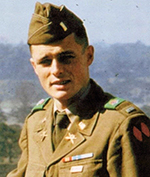
A graduate of Chaminade High School on Long Island, N.Y., John G. “Jack” Aicher graduated in 1952 from St. Bonaventure with a Bachelor of Arts in English.
A distinguished military graduate, he declined a Regular Army commission, but was called to active duty soon after graduation. Assigned to the recently activated 191st Field Artillery Battalion, 278th Regimental Combat Team, he reported to Camp Drum, N.Y., in August 1952.
The assignment allowed for extensive training, and Aicher directed 16-inch naval gunfire from the battleship New Jersey during Operation Seascape in Little Creek, Va., and trained for sustained cold weather operations during Operation Snowstorm at Camp Drum.
In March 1953, he reported to the Field Artillery Battery Officer Course at Fort Sill, Okla. This was a prerequisite for assignment to Far East Command (FECOM), which inevitably meant combat operations in Korea. Aicher received orders and deployed to Korea in August 1953. He joined the Seventh Infantry Division’s 49th Field Artillery Battalion as a forward observer.
Soon after the Armistice Agreement that separated the warring factions, he was assigned to an observation post on the newly created demilitarized zone (DMZ). He also performed a variety of additional duties, including defense counsel for the battalion special court martial and Troop Information and Education (TI&E) Officer, which required him to keep troops informed on “why we were in Korea.”
After serving several months as the battalion communications officer, he received orders to return to the United States. He was honorably released from active duty in May 1954. He immediately joined the Active Reserve’s 77th Division, with headquarters in New York City. There, Aicher served as aide de camp to the DIVARTY commander for two years before being assigned to command of Headquarters Battery, 77th Division Artillery.
An accomplished marksman, he was captain of the 77th Division Rifle Team and won the gold medal for highest individual score at the 1957 New York Military District Rifle Championship. He remained in battery command until his retirement from the Active Reserve as a captain in 1963.
Aicher’s dedication to service persisted beyond his 11 years in uniform. He earned his Juris Doctor from Fordham University School of Law in 1957 and enjoyed a long and varied career as an attorney and public servant. Admitted to the bar in New York and Vermont, he served as chief counsel of the New York State Joint Legislative Committee on Towns and Villages, legislative counsel to Assemblyman George Farrell and as a volunteer attorney in the New York State Prison System and for homeowners in foreclosure actions, Suffolk Supreme Court.
Aicher also was a volunteer judge for the New York City Small Claims Night Court of Queens and Harlem and the pro bono attorney representing a family in the Diocese of Burlington, Vt.
Aicher was an early contributor to the work of the Seneca Battalion Army ROTC Hall of Fame and has remained actively engaged in activities at his alma mater. In 2014, he published his memoirs in the book "Footprints," and in 2017 he was featured in the St. Bonaventure Army ROTC Korean War Project.
A consistent servant-leader who embodies the Franciscan values he learned at St. Bonaventure, Aicher and his wife, Anne, raised four daughters and a son. He has been active in Catholic parishes in New York and Vermont and serves as a food pantry volunteer with the North Fork Parish Outreach.
Aicher was awarded the U.N. Service Medal, Korean Service Medal and National Defense Medal, and also received recognition for his work on behalf of prisoners in New York State prisons and from the Board of Trustees and faculty of Molloy College upon his retirement from the board after 12 years of service.
Col. (Ret.) Gene W. McConville, Class of 1963
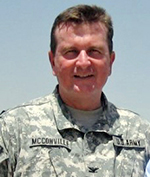
A 1983 graduate of St. Bonaventure University, Gene W. McConville received a Regular Army commission as an armor second lieutenant. After completing the Armor Officer Basic Course, he served as platoon leader, company executive officer and assistant S-3 in the 2nd Battalion, 32nd Armor, 1st Brigade, Third Armor Division in Kirsch Goens, Germany, from 1983 to 1987.
In 1988, he was branch transferred to Military Intelligence. He completed the Intelligence Officer Advanced Course at Fort Huachuca, Ariz., and was assigned as Chief, Plans, Policy, Programs in the Office of the Assistant Deputy Chief of Staff for Human Intelligence (HUMINT) Operations. This experience led him to be selected for additional training before he became the assistant Department of the Army attaché in Lagos, Nigeria.
From 1991 to 1994, he observed and reported on a cycle of critical transition and election activities as Nigeria changed from a military government to democratic government under civilian authority. He also deployed to Somalia, where he coordinated an effort with U.S. and Nigerian militaries to implement a Nigerian Armor Battalion in Somalia to support Operation Restore Hope.
McConville’s next assignment was as the Assistant Army Attaché in Pretoria, South Africa, where, from 1994 to 1996, he observed the political transition from apartheid to a post-apartheid government. He set up the first US post-apartheid Security Assistance Program in South Africa and facilitated the transition and integration of the African National Congress into the South African National Defense Force.
Graduating from the Naval War College in 1997, he was assigned to a special mission unit as deputy director in support of operations in the Balkan Theater from 1997 to 1999. He returned to embassy service in 1999 and as the assistant Army attaché in Jakarta, Indonesia, observed and reported on transitional governments in the area, including hostilities in East Timor, and provided key insights regarding Al Qaida affiliates in the region.
In 2003, he began a second assignment to a special mission unit that conducted cross-border operations in Afghanistan and Pakistan. He reported on terrorism, Kashmir separatist issues and nuclear threats as the assistant Army attaché in Islamabad, Pakistan, from 2004 to 2005, before completing immersion training in Persian/Farsi, prior to assignment as the Defense Attaché in Islamabad, in 2006. There, he led and managed a large defense attaché office that supported Central Command issues until 2008, when he was assigned as the deputy director, training, HUMINT in the Defense Intelligence Agency.
McConville became the Theater Counterintelligence HUMINT coordinator for the International Security Assistance Force, NATO Command and U.S. Forces Afghanistan Command in 2009. In 2010, he joined the faculty of the Africa Center for Strategic Studies and ran programs for African military partners and published on African airlift capabilities.
He retired from the U.S. Army as a colonel in 2012. His numerous awards include the Defense Superior Service Medal, Bronze Star Medal (2nd Award), Defense Meritorious Service Medal (3rd Award), Joint Service Commendation Medal, Meritorious Service Medal, Army Commendation Medal, Army Achievement Medal (2nd Award), Meritorious Unit Citation (6th Award), National Defense Service Medal (2nd Award), Armed Forces Expeditionary Medal, Afghanistan Campaign Medal with two campaign stars, Global War on Terror Expeditionary Medal, Humanitarian Service Medal, Army Service Ribbon, Overseas Service Ribbon (5th Award) NATO Medal and the Parachutist Badge.
Capt. Joseph E. Potter, Class of 1966
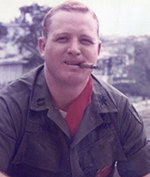
Having grown up in Washington, D.C., Joseph E. Potter enrolled at St. Bonaventure University, joined the Army ROTC program and graduated in May 1966 with a Bachelor of Business Administration in finance and a commission as a field artillery second lieutenant.
In September, he was recalled from The Army Reserve and reported to Fort Sill, Okla., for the Field Artillery Basic Officer Course. Upon graduation, he began the Officer Rotary Wing Aviator Course at Fort Wolters, Texas, in early 1967, and earned his aviator’s wings. He completed advanced flight training at Fort Rucker, Ala., in August 1967.
In November 1967, Potter reported for duty in the Republic of Vietnam and was assigned to the 68th Assault Helicopter Company, 145th Combat Aviation Battalion, 12 Aviation Group, 1st Aviation Brigade. Flying UH1 “Huey” troop carriers and gunships out of Bien Hoa, Potter served with the “Top Tigers” and “Mustangs.”
On April 4, 1968, he was shot down, just south of Long Binh. Wounded in his right hand and cheek, he skillfully brought the badly damaged helicopter to the American base. Potter continued to fly and two months later, on June 7, 1968, while flying a mission near the Mekong Delta, he was shot down for the second time. In this instance, another crew retrieved him and, shortly after, his Huey helicopter, which was found to have 138 bullet holes. Potter was wounded in the left elbow and arm.
He recovered and was assigned to the 120th Assault Helicopter Company in Saigon. Soon after, he met United States Military Assistance Command Vietnam (MACV) Commanding Gen. Creighton Abrams, who, with the incentive of an early promotion to captain, appointed Potter as the leader of the “Razorbacks” Huey gunship platoon in September 1968.
The Razorbacks were a VIP organization in direct support of MACV headquarters, and Potter often flew while in direct radio contact with Abrams. The work continued to be dangerous, but he volunteered to extend his tour and assisted in the transition of new personnel before he left Vietnam in December 1968. In his 13 months in Vietnam, he had flown 1,400 combat hours.
Potter was assigned to Fort Campbell, Ky, in December 1968 and commanded a basic training company until being honorably released from active duty in September 1969. He continued to fly as an Army aviator in the Virginia National Guard for seven more years.
In 1974, he began a career as a broker with the Alliance Insurance Group and he retired in 2013. He and his wife, Mary Margaret, have been parents to four children.
Potter was submitted for the Distinguished Flying Cross, Bronze Star Medal and second Purple Heart Medal, but the records were lost when an administrative building was destroyed by enemy fire before his departure from Vietnam.
His military awards include the Purple Heart Medal, Air Medal (37 OLC), Vietnam Campaign Medal with “60” Device, Vietnam Service Medal with 5 Campaign Stars, National Defense Service Medal, Two Overseas Service Bars, Army Aviator Badge and Expert Pistol and Rifle Badges.